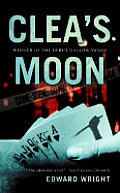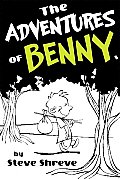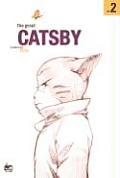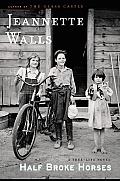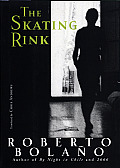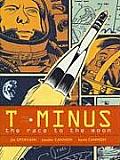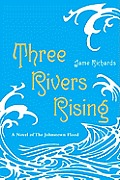Link to this review in the form of a comic strip by geneambaum tagged mystery • historical fiction
Link to this review by gigi tagged picture book
The Adventures of Benny is about Benny making new friends and enemies. On his first adventure he meets Bigfoot. Bigfoot has a big sliver on his butt that he can’t get out. Benny helps get it out and gives him socks and a pair of underwear. On his second adventure he goes to Egypt with his uncle Howard to find the mummy Butthankhamen. He is known better as King Butt. Benny finds him and in his sarcophagus they also find a letter that says there is a curse. And much more!
Why I picked it up: Because we found it at the library and it looked good.
Why I finished it: It was funny. And I liked the pictures, especially the one where the Booger-Man smells Banjo’s farts.
I’d give it to: My friend Grace because she likes crazy funny stories that couldn’t happen in real life. Toby would like the pirate chapter where Benny meets Long John Underwear. And my dad because he loves books about poop.
Link to this review by geneambaum tagged graphic novel • coming of age
Anthropomorphic webcomic about a 20-something cat living in Seoul. Catsby’s girlfriend just got married. He’s trying to fill the hole in his life by dating Sun, who obviously isn’t a great fit. Houndu, his friend and roommate, is lusting after the mother of a young girl he’s tutoring.
Why I picked it up: I was preparing a presentation for the ALA annual conference on my favorite moments in comics. After rereading the first book, I needed to read more.
Why I finished it: Catsby expresses a gritty Korean reality I saw when I lived there, but that I never see in other media. The backstreets are dirty, the houses are falling apart, and there’s no one in the story for whom life is coming together successfully.
I’d give it to: Brenna and Jenna, who are both obsessed with Korean TV dramas. I’ve yet to find one I like (though I haven’t tried the one based on Catsby). Maybe, after reading this, they’ll be able to recommend one that I will like.
Link to this review by flemtastic tagged historical fiction • literary • coming of age
Lily Casey Smith was born in 1901 and spent her first years in a sod-topped dugout in West Texas. Occasionally, a goat’s foot would puncture the ceiling because they grazed on the roof. At ten, she ran family farm. At fifteen, she was a teacher in the Arizona desert. She divorced a bigamist, learned to fly, and later proposed a rancher. She was plainspoken and unwilling to compromise her beliefs, which caused her to be fired several times. Teaching in a conservative town, she told the girls about Chicago, the way things were in the outside world, and that they could be independent
Why I picked it up: I loved The Glass Castle and was ready to read anything else about Jeannette Walls’ family. I saw this book on the coffee table in a house I was house-sitting, borrowed it, and read it before they returned from vacation (they’re none the wiser).
Why I finished it: I powered through it in an afternoon. Lily saw each troublesome and tragic event in her life as something that could be dealt with through hard work and perseverance. Lily’s indomitable spirit is the core of this “true-life novel,” a well-researched memoir with fictional dialogue. As she moves through the decades we see her mature and age, up to the point where her daughter Rose Mary marries a conman, the beginning of the story in the author’s previous memoir.
I’d give it to: Confrontational folks like my Grandfather, who would appreciate Lily’s need to put her opinions out there. My wife, who struggled to finish The Glass Castle because it was so sad. She would like the attitude Lily brought to bear on her (sometimes grim) struggles. Betty, who enjoyed West with the Night by Beryl Markham, which is set in Africa but is also about an opinionated woman living in a remote part of a male dominated world.
Link to this review by geneambaum tagged graphic novel • historical fiction
Paolo grew up on the family farm in southern Italy. He fought in World War I, tried to expand his family’s business by moving to America, and then returned home. During the Feast of Epiphany, fascist and socialist supporters fight in the streets, with tragic results for Paolo and his family.
Why I picked it up: I wanted to reread it because I enjoyed Cavallaro’s art in Foiled so much.
Why I finished it: Foiled uses a lack of color to show the protagonist’s view of the world. Parade uses color to create an amazing sense of place and time.
I’d give it to: Betty, who enjoyed both Hope Larson’s Mercury and James Sturm’s Market Day, because great historical graphic novels are hard to come by.
Link to this review by davidtomashek tagged mystery • literary
In a small town on the Spanish coast, each of three men tells his story. Their lives slowly become entwined over a summer, converging at the scene of a murder. Remo was once a poet but is now a proprietor of many small business ventures. Gaspar is a friend from the distant past who comes to town when Remo offers him a job. Enric is an ambitious city leader with a long-standing grudge against Remo.
Their ambitions and desires are expressed in their pursuit of women. Enric worships Nuria, a beautiful figure skater, and embezzles money to build her a secret skating rink. Remo has an affair with Nuria, but beyond the physical passion she is aloof. Gaspar follows a quiet and sullen woman through the alleys of town. Each man’s longing eventually brings him to an abandoned mansion on the outskirts of town, where a woman’s body is found on the ice.
Why I picked it up: Roberto Bolaño wrote a crime novel?
Why I finished it: Bolaño gives small hints as he tantalizingly reveals his characters and their stories. With each page I wanted to know more, not just about the impending murder but about how each man would follow his own obsession.
I’d give it to: Ben, who enjoys character driven crime novels like The No. 1 Ladies’ Detective Agency, which focus on exploring the mysteries of life.
Link to this review by sarahhunt tagged history • graphic novel
Behind the political one-upmanship of the U.S. and Soviet space race were dedicated scientists and spacefarers on both sides. The drama of human ingenuity pitted against overwhelming challenges in science and engineering ratchets up as the story counts down to the first person to set foot on the moon.
Why I picked it up: I was swept up in the excitement of 40th anniversary last year.
Why I finished it: I loved seeing the parallel challenges faced by the U.S. and Soviet teams. This graphic novel’s page layouts built the excitement of each milestone along the way. The illustrations contained tons of accurate details that didn’t bog down the story, but were there for fans who were looking for them.
I’d give it to: Jason, who is willing to watch From The Earth To The Moon with me every few years. Andy, who works with teens to show them that math and engineering can lead to amazing things. Kids like the boy in the book who asked his mom why his engineer dad had to work after hours, who might be surprised to know that parents can be heroes, too.
Link to this review by flemtastic tagged historical fiction • romance
Sixteen-year-old Celestia and Peter first meet at a resort above a dam where three rivers come together. He is a workman, she a noble lady with prospects. When her sister Estrella is sent away to avoid a scandal, Celestia is forced to go to Switzerland to make her forget about her would-be lover. Instead, on her return, she runs away with him. Peter is quite sick, so she tends to him. The dam, long rumored to be breaking, finally gives way.
Why I picked it up: Historical fiction is growing on me as a genre. I saw a chance to learn about the Johnstown Flood while enjoying a good story.
Why I finished it: The book is ostensibly about the flood, but it is primarily a love story set against that tragedy. The free verse format lends itself to brevity and helps create a breezy backdrop for the story that mirrors the summer setting when the lovers first meet.
I’d give it to: Anyone looking for a good read alike for Jacqueline Davies’ Lost (historical fiction about the Triangle Shirtwaist Factory Fire). Middle school readers not yet ready to tackle Jane Austen’s books, who might like a primer about early 20th century American high society. Anne, who is always up for an unabashed love story, especially for some light reading at the pool.
